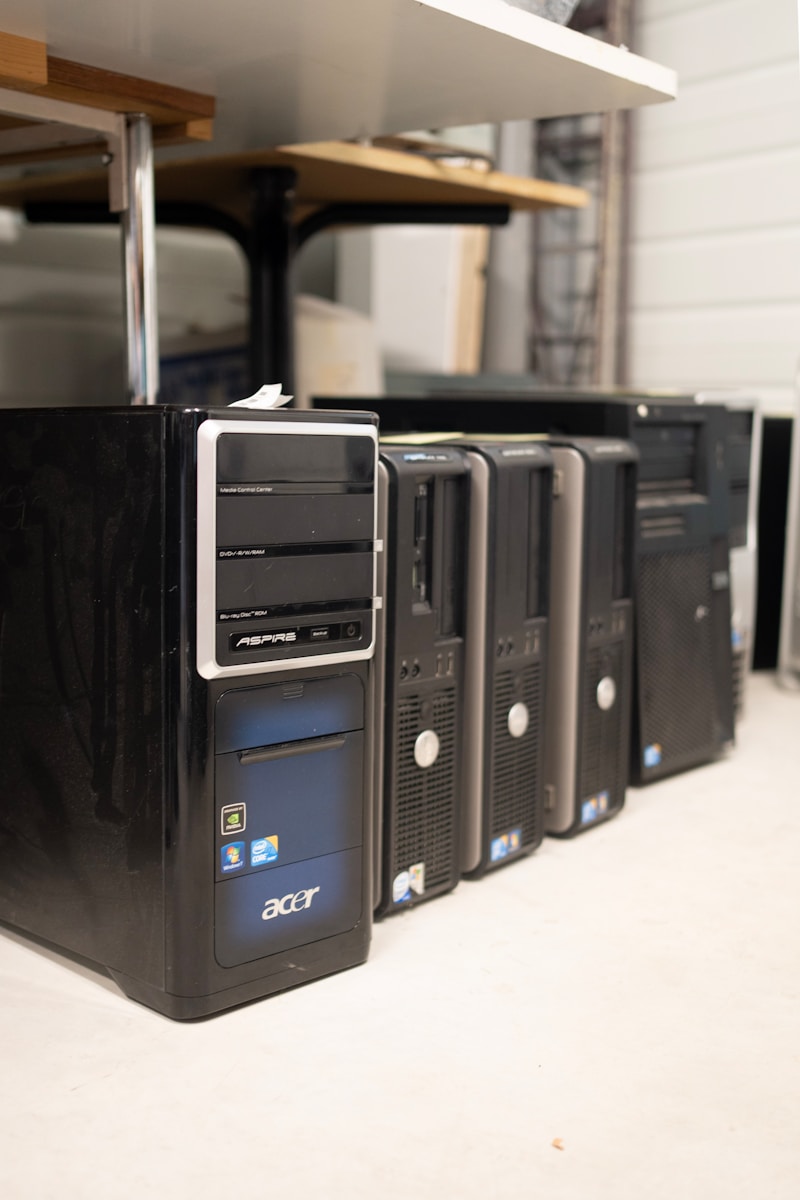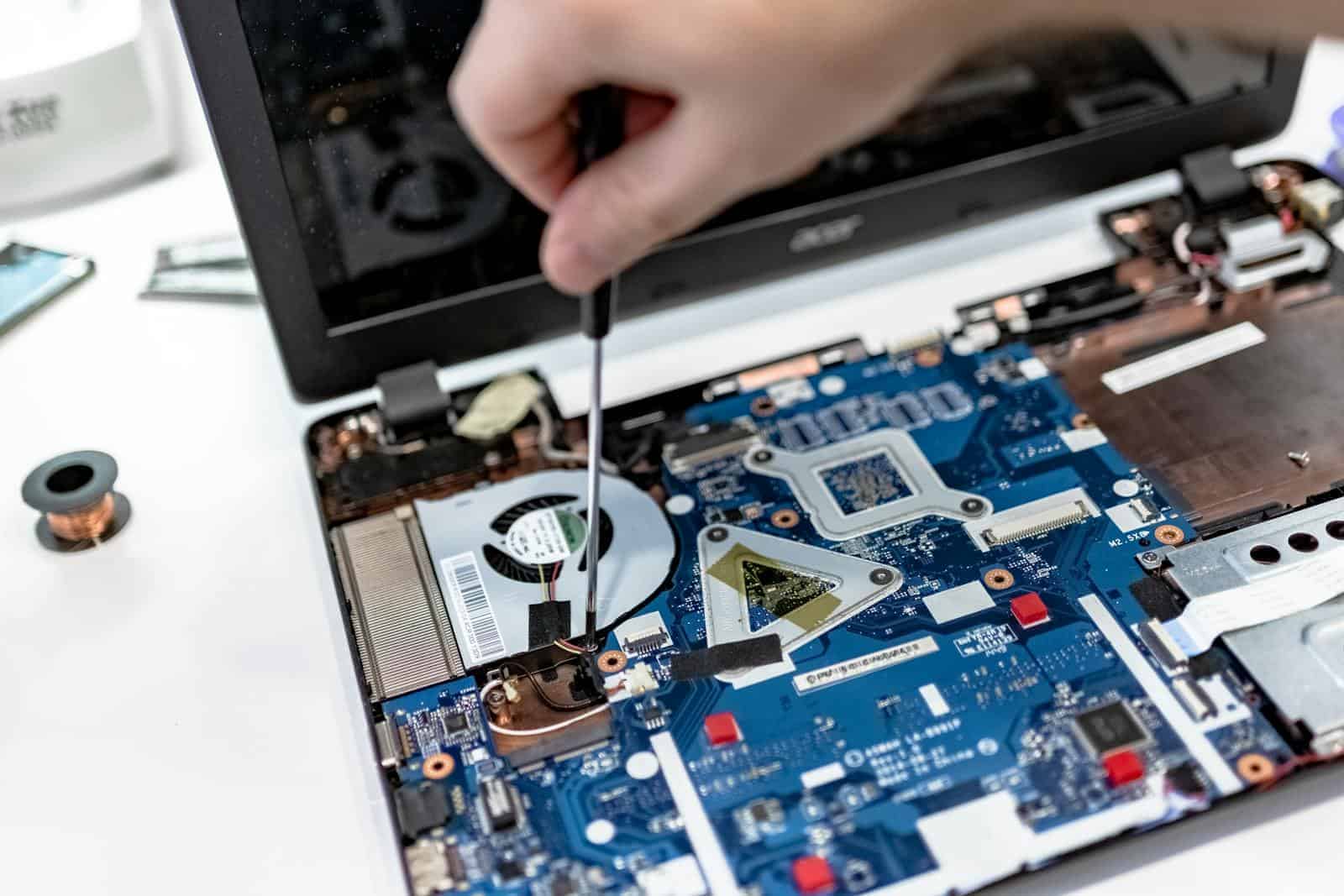Computer repair can seem intimidating for many users. However, with some basic knowledge and careful steps, many common issues can be resolved at home. Often, simply restarting the computer and checking cable connections can fix straightforward problems without the need for extensive repairs. When encountering computer issues, it’s best to start with the basics.
Unplugging the device and holding down the power button for 30 seconds can reset the internal components. This simple action may resolve glitches that lead to system freezes or unresponsive behavior. For more complex problems, Windows users can utilize the built-in repair tools. The Recovery options available in the Windows Settings allow users to reinstall the operating system while keeping personal files safe. This can effectively address software-related issues that impact system performance or stability.
And always remember, if you can’t fix something on your own there are a lot of resources out there and to get help including contacting the manufacturer of your computer or visiting a 3rd party to get a diagnosis or troubleshooting.

Simple Steps to Fix Your Computer at Home
Spotting the Problem
First things first: what’s wrong with your computer? Is it slow, or won’t it start at all? Pay attention to any error messages or unusual sounds. These can give you clues.
Quick Fixes to Try
Often, a simple restart does the trick. Check that all cables are snug and connected. Make sure your software and drivers are up to date.
Common Issues and Solutions
| Problem | Solution |
|---|---|
| Slow Performance | Close unnecessary programs, free up disk space |
| Computer Overheating | Clean dust from vents, ensure proper airflow |
| No Sound | Check volume settings, update audio drivers |
| Internet Not Working | Restart router, check network settings |
Dealing with Software Glitches
Run antivirus scans to remove malware. Uninstall programs you don’t need. Clear your browser’s cache to improve speed.
Troubleshooting Hardware
Strange noises might mean hardware trouble. Open the case and check for loose connections. Clean out any dust carefully.
Essential Tools
A small screwdriver set and compressed air can be very useful. An external hard drive is great for backups.
Safety Tips
Always power down and unplug your computer before opening it. Ground yourself to prevent static damage.
When to Call a Pro
If you’ve tried everything and nothing works, it’s time to seek professional help. Better safe than sorry.
Preventing Future Issues
Keep your system updated and clean. Use reliable antivirus software. Regular maintenance goes a long way.
Targeted Advice for Laptop and Desktop Repairs
Laptop Repair Tips
Laptops are portable but delicate. Handle them with care. Always unplug and remove the battery before opening. Use a soft cloth to clean the screen gently. If your keyboard isn’t working, check for debris under the keys.
Common Laptop Issues and Fixes
| Issue | Quick Fix |
|---|---|
| Battery Not Charging | Check the charger and power outlet |
| Overheating | Use a cooling pad, clean air vents |
| Wi-Fi Problems | Toggle airplane mode, update drivers |
| Cracked Screen | Connect to external monitor, seek professional help |
Desktop Repair Tips
Desktops are easier to open and upgrade. Before you start, unplug all cables. Ground yourself to avoid static. Dust buildup can cause issues; use compressed air to clean inside.
Upgrading Desktop Components
Adding more RAM or a new graphics card can boost performance. Make sure new parts are compatible. Consult the motherboard manual for guidance.
Troubleshooting Desktop Problems
If it won’t start, check the power supply. Listen for beep codes—they can indicate what’s wrong. Reseat memory modules if necessary.
Key Takeaways
- Basic troubleshooting like restarting and checking connections often solves simple issues
- Unplugging and resetting can resolve many common computer problems
- Windows provides built-in tools for system repair and reinstallation
Preparing for Computer Repair
Proper preparation is key to a smooth computer repair process. This involves understanding basic troubleshooting steps, setting up a suitable workspace, and safeguarding important data.
Understanding the Basics
Before starting any repair work, identify the problem. Check for common issues like slow performance, unusual noises, or software errors. Run basic diagnostics to pinpoint the cause. Update your operating system and drivers to rule out software-related problems. Consult your computer’s manual or manufacturer’s website for model-specific troubleshooting steps.
Keep a record of error messages and when they occur. This information helps technicians diagnose issues faster. Research potential solutions online, but avoid making changes you’re unsure about. If the problem persists after basic troubleshooting, it’s time to prepare for more advanced repairs.
Setting Up the Workspace and Tools
Create a clean, well-lit workspace for computer repairs. Use an anti-static mat to protect sensitive components from electrical discharge. Gather necessary tools like screwdrivers, tweezers, and a magnifying glass. Ensure you have the right screwdriver sizes for your specific computer model.
Organize small parts in labeled containers to avoid losing them. Keep a notepad handy to document the disassembly process. This helps with reassembly later. Have cleaning supplies like compressed air and isopropyl alcohol ready to remove dust and grime.
Ensuring Data Safety
Back up all important files before starting any repair work. Use cloud storage or an external hard drive to create a complete backup. This protects your data in case of accidental loss during repairs.
Log out of all online accounts and clear browsing history from web browsers. Remove any external storage devices or peripherals connected to the computer. If possible, remove the hard drive before sending the computer for professional repair.
Install and run up-to-date antivirus software to check for malware. Malicious programs can cause performance issues that mimic hardware problems. Create a list of installed programs and license keys in case a system reset is needed.
Executing the Repair Process
Repairing a computer involves addressing both software and hardware issues. The process requires careful steps and the right tools to fix problems effectively.
Addressing Software Issues
Windows 10 offers built-in repair tools to fix common software problems. The System File Checker (SFC) scans for and repairs corrupted system files. To use it, open Command Prompt as administrator and type “sfc /scannow”. This command checks system files and replaces any corrupted ones.
For more stubborn issues, use the Deployment Image Servicing and Management (DISM) tool. Run “DISM /Online /Cleanup-Image /RestoreHealth” in Command Prompt. This command repairs the Windows image, fixing issues that SFC can’t.
Windows Update can also help repair software problems. Go to Settings > Update & Security > Windows Update and click “Check for updates”. Install any available updates to fix bugs and improve system stability.
Handling Hardware Components
Hardware repairs often involve physical components. First, identify the faulty part. Common issues include failing hard drives, faulty RAM, or overheating processors.
For hard drive problems, use built-in Windows tools like Check Disk. Open Command Prompt and type “chkdsk /f /r” to scan and repair disk errors.
RAM issues can be diagnosed with Windows Memory Diagnostic tool. Search for it in the Start menu and run the test to check for memory problems.
Overheating can be fixed by cleaning dust from fans and vents. Use compressed air to blow out dust carefully. Replace thermal paste on the CPU if needed.
For serious hardware issues, consult the manufacturer’s support or a professional technician. Always use quality parts for replacements to ensure long-term reliability.
Frequently Asked Questions
Computer repairs can be daunting for many users. These common questions address key issues and provide practical solutions for various PC problems.
What are the common steps to troubleshoot a computer that won’t power on?
Check the power cord connection. Ensure it’s plugged into a working outlet. Try a different power cable if available. Inspect the power supply unit for any visible damage. If using a laptop, remove the battery and attempt to power on with just the AC adapter.
Can I fix computer hardware issues myself, and if so, how?
Some hardware issues can be fixed at home. Start by identifying the problem component. For simple fixes like replacing RAM or hard drives, consult your computer’s manual. Use anti-static precautions when handling internal parts. For complex issues, seek professional help to avoid further damage.
What is the process for running a system repair on Windows 10?
Access the Advanced Startup options by holding Shift while clicking Restart. Select Troubleshoot, then Advanced Options. Choose Startup Repair and follow the prompts. If unsuccessful, use System Restore to revert to a previous working state.
How can I diagnose and resolve general computer problems?
Use built-in diagnostic tools like Windows Memory Diagnostic for RAM issues. Check for malware using up-to-date antivirus software. Review recent changes or installations that might have caused problems. Consult error messages for specific troubleshooting steps.
What should be done first before attempting any computer repairs?
Back up important data to prevent loss. Gather necessary tools and information about your computer model. Research the specific issue and potential solutions. Ensure a clean, static-free workspace. Disconnect the power source before opening the computer case.
What options are available for repairing a non-responsive computer keyboard?
Try unplugging and reconnecting the keyboard. Check for driver updates in Device Manager. Clean the keyboard to remove debris. Test with a different keyboard to isolate the issue. For laptop keyboards, check for loose connections or consider replacement if damaged.






